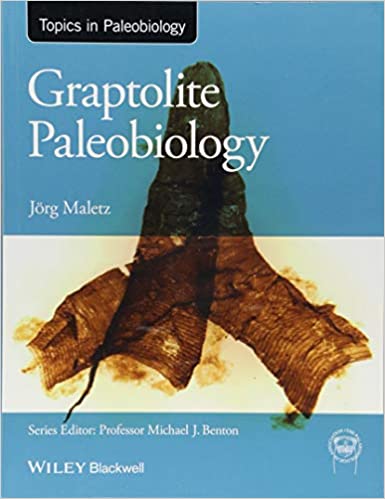Graptolite Paleobiology: Topics in Paleobiology
By Jörg Maletz and others

As I pointed out in my review of Graptolites, a few months ago, I dropped my son off at Glasgow University. On the way back, visited the classic geological site of Dob’s Linn in Dumfries and Galloway, famed for containing the golden spike of the Global Boundary Stratotype Section and Point (GSSP) marking the boundary between the Ordovician and Silurian periods. Dob’s Linn was also instrumental in Lapworth’s explanation of the complexity of Silurian deposits in the area and the efficacy of using graptolites as index fossils during the Palaeozoic.
However, I needed something a bit more detailed than that book on the subject of graptolites, so bought Graptolite Paleobiology. This is because, as it says:
“The graptolites constitute one of the geologically most useful taxonomic groups of fossils for dating rock successions, understanding paleobiogeography and reconstructing plate tectonic configurations in the Lower Palaeozoic. Graptolites were largely planktic, marine organisms, and as one of the first groups that explored the expanses of the world’s oceans are vital for understanding Palaeozoic ecology. They are the best and often the only fossil group for dating Lower Palaeozoic rock successions precisely. Thousands of taxa have been described from all over the planet and are used for a wide variety of geological and palaeontological (biological) research topics. The recent recognition of the modern pterobranch Rhabdopleura as a living benthic graptolite enables a much better understanding and interpretation of the fossil Graptolithina.”
Since the book Graptolites, by renowned graptolite expert, Barrie Rickards (and Douglas Palmer), was published, there has been an enormous increase of knowledge on this group of organisms, which has never been brought together in a single volume. Graptolite Paleobiology provides an up-to-date insight into research on graptolites, including the use of new methods of investigation and documentation.
In fact, cladistic interpretation of graptolite taxonomy and evolution has advanced the understanding of this group of organisms considerably in the last two decades, and has highlighted their importance in our understanding of evolutionary processes. Therefore, this book shows graptolites (including their living relatives) in a new and fascinating light, and demonstrates the impact that the group had on the evolution of the modern marine ecosystem.
It is not necessarily and easy read, but this book is certainly aimed, not only at earth scientists but also at biologists, ecologists and oceanographers, while remaining accessible to undergraduates and non-specialists like me who seek up-to-date information about this fascinating topic in palaeobiology.
Well worth getting if you are interested in graptolites for whatever reason.
Graptolite Paleobiology: Topics in Paleobiology, by Jörg Maletz, Wiley-Blackwell, West Sussex (2017), 336 pages (paperback), ISBN: 9781118515723